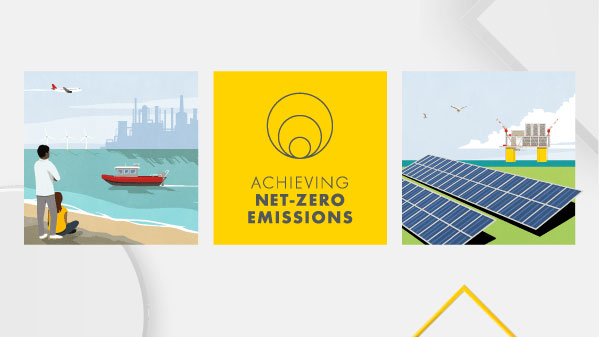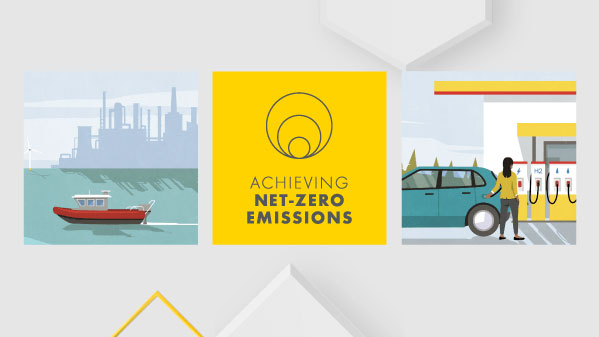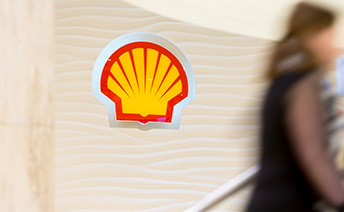Climate-related metrics and targets
Metrics used by Shell to assess climate-related risks and opportunities in line with its strategy and risk management process
This section describes our energy product and carbon emissions performance and metrics used to monitor our progress in respect of significant climate-related transition risks and opportunities, including targets reflected in remuneration of senior management and employees.
Key metrics we use to track progress against our energy transition strategy are the NCI of our portfolio and our absolute emissions. Additional metrics associated with the resilience of Shell’s strategy to transition risks and opportunities are included in “Resilience of Shell’s strategy to different climate-related scenarios”. This includes information on capital allocation between our business segments and the sensitivity of our assets to carbon, discount rate and commodity price assumptions.
Another potentially significant climate-related risk relates to Shell’s physical risk exposure at an asset level. We are working to establish metrics in this area to monitor our exposure to this risk across the Group.
Our overall climate target is to become a net-zero emissions business by 2050. It includes net-zero emissions from our operations (Scope 1 and 2 emissions), as well as net-zero emissions from the end-use of all the energy products we sell (Scope 3 emissions). We have set short-, medium- and long-term targets to track our performance against our overall climate target over time.
We believe our total absolute emissions peaked in 2018 at 1.73 gigatonnes of carbon dioxide equivalent (GtCO2e).
In October 2021, in support of our 2050 net-zero emissions target, we set a target to reduce Scope 1 and 2 absolute emissions from assets and activities under our operational control (including divestments) by 50% by 2030 compared with 2016 levels on a net basis. We monitor our progress against these targets using the key metrics described.
Climate-related targets summary
[B] Operational control boundary.
[C] Overall methane emissions intensity for facilities with marketing gas.
[D] Indirect GHG emissions (Scope 3) based on the energy product sales included in Net Carbon Intensity (NCI) using equity boundary.
[E] Our interim targets for 2035 and 2050 are based on mitigation activities undertaken by both Shell and our customers.
Net carbon intensity (NCI)
Shell’s NCI is the average intensity, weighted by sales volumes, of the energy products sold by Shell. It is tracked, measured and reported using the Net Carbon Footprint (NCF) methodology.
We have received third-party limited assurance on our net carbon intensity for the period 2016 to 2022.
Scope of Net Carbon Intensity [A]
Emissions from energy products included within the Net Carbon Footprint methodology
Performance – NCI
In 2022, Shell’s NCI was 76 grams of carbon dioxide equivalent per megajoule of energy (gCO2e/MJ), a 1.3% decrease from the previous year and a 3.8% reduction compared with 2016, the reference year. The decrease in Shell’s NCI in 2022 was primarily due to an increased proportion of renewable power and corresponding reduction in the carbon intensity of our power sales. Shell’s 2022 NCI includes 4.1 million tonnes of carbon credits, compared to the 5.1 million tonnes which were included in Shell’s 2021 NCI.
NCI reference year: 2016 |
2022 |
2021 |
2020 |
2016 |
|||||||||||
|---|---|---|---|---|---|---|---|---|---|---|---|---|---|---|---|
NCI [E] |
gCO2e/MJ |
76 |
77 |
75 |
79 |
||||||||||
Estimated total energy delivered by Shell [A] |
trillion (10^12) MJ |
16.29 |
17.89 |
18.40 |
20.93 |
||||||||||
Estimated total GHG emissions included in NCI (net) [B] |
million tonnes CO2e |
1,240 |
1,375 |
1,384 |
1,645 |
||||||||||
Carbon credits |
million tonnes CO2e |
4.1 |
5.1 |
3.9 |
0.0 |
||||||||||
Estimated total GHG emissions (gross) [C][D] |
million tonnes CO2e |
1,244 |
1,381 |
1,388 |
1,645 |
||||||||||
|
|||||||||||||||
As we implement our Powering Progress strategy, we are increasing the share of low-carbon products in our energy product sales, which is the biggest driver for reducing our NCI.
Our ability to change the emissions intensity of each energy product varies depending on the product type:
- Hydrocarbon fuels – emissions from end-use by customers are by far the biggest contributors to the carbon intensity of the product. As a result, the emissions intensity of hydrocarbon fuels is expected to stay relatively unchanged over time. This is why we are focused on helping our customers decarbonise.
- Power – the emissions intensity of power can be highly variable depending on how it has been generated. The proportion of our renewable power sales and the generation mix in countries where we sell power to the market both affect Shell’s overall power mix and its resulting emissions intensity.
- Biofuels - can vary significantly in intensity depending on the feedstock and production process used.










